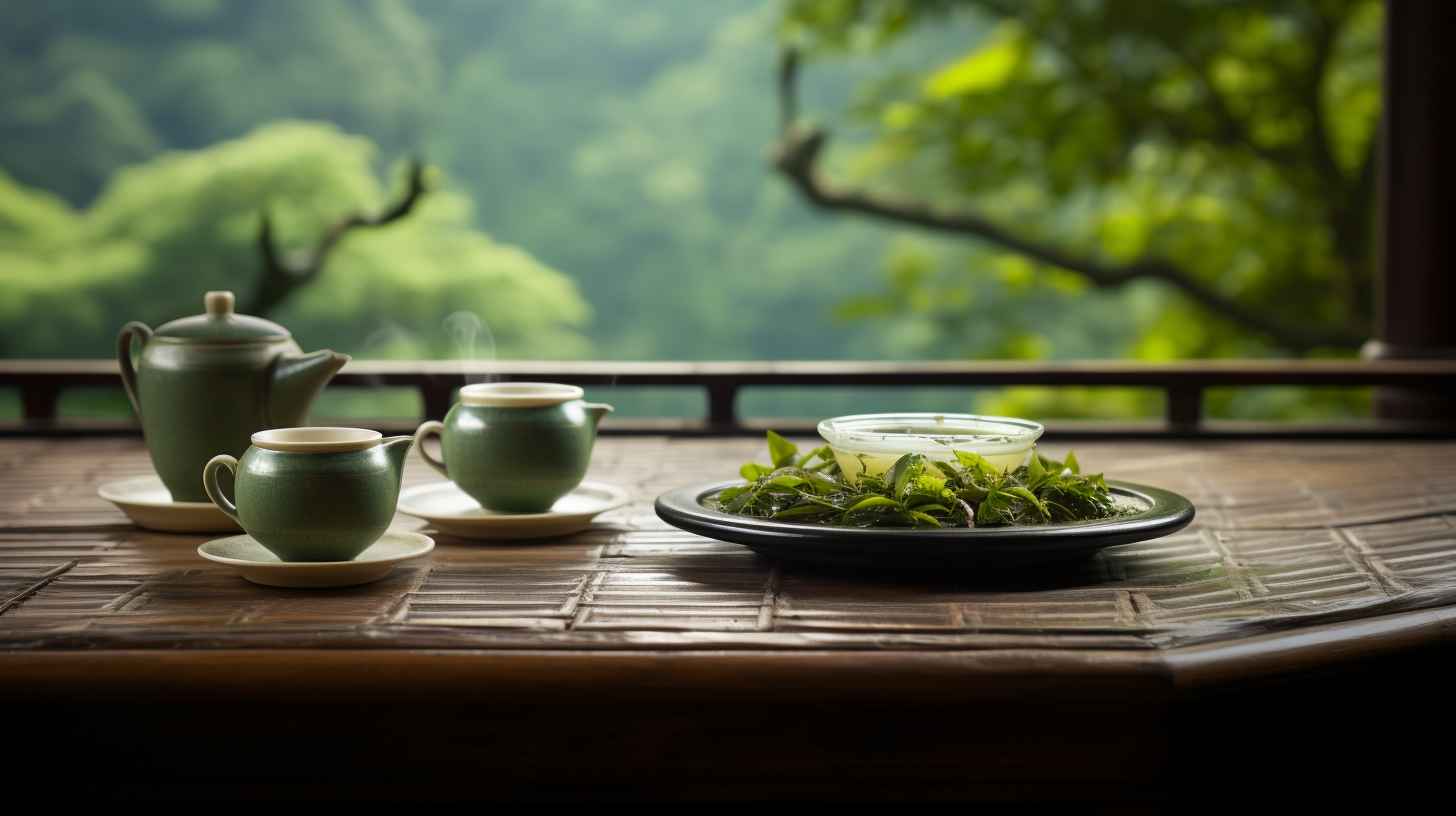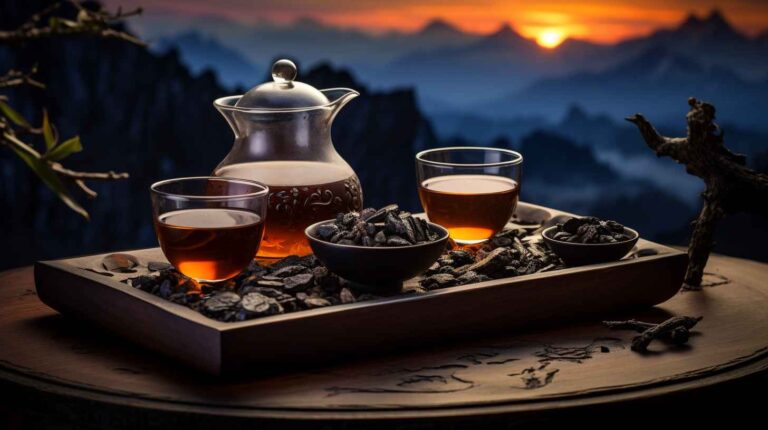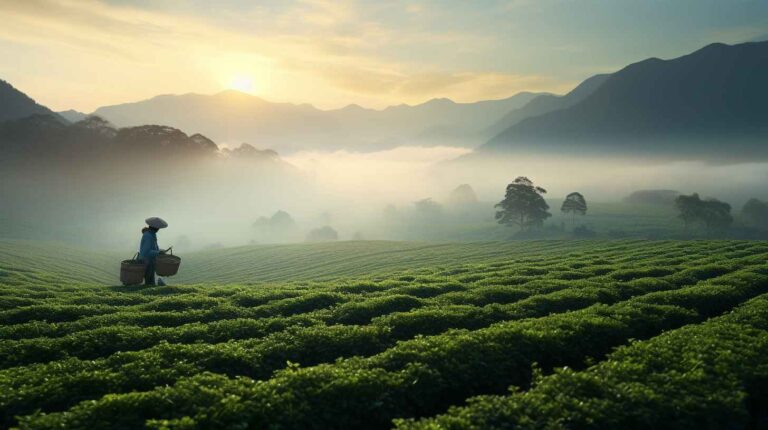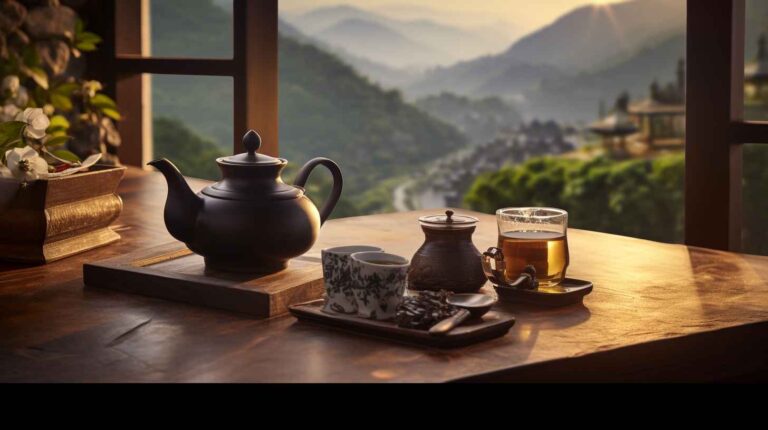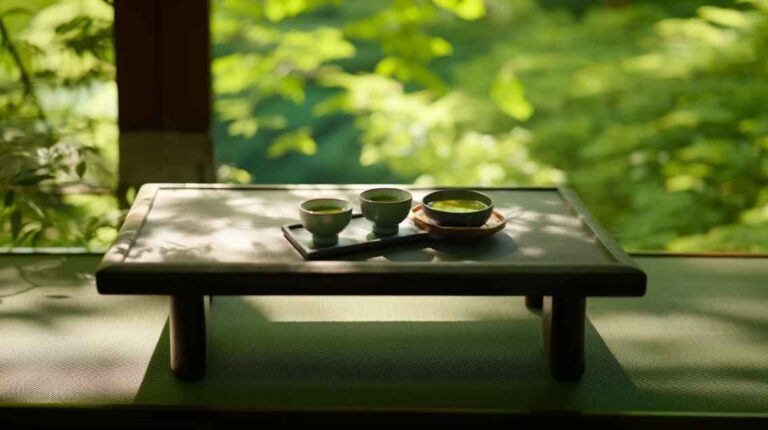Unveiling Oolong: The Artful Balance Between Black and Green
Introduction
Every sip of tea is like taking a journey through time, history, and diverse cultures. As the second most consumed beverage globally, just after the quintessential water, tea has stood the test of time and been an integral part of countless traditions and ceremonies. But not all teas are created equal. Among the wide and varied world of teas, oolong stands out, capturing the imagination and palate of those who venture to explore its depths. Often described as the golden middle, oolong tea offers the perfect balance between the delicate freshness of green tea and the robust, full-bodied character of black tea. A favorite among many tea enthusiasts, oolong’s multifaceted character, layered flavors, and intricate preparation make it an exquisite choice for those seeking more than just a beverage.
The Spectrum of Oxidation: A Deep Dive
Central to the world of tea is the concept of oxidation. This natural process, driven by the exposure of tea leaves to air, determines much of what a tea will eventually become. The degree of oxidation influences everything: from the color of the brew and the appearance of the leaves to the aroma that fills the air when hot water meets tea and the flavor profiles that dance on the palate.
Green tea, known for its verdant hue and vegetal, sometimes grassy, notes, undergoes minimal oxidation. The process is halted almost immediately after harvesting, allowing the leaves to retain their natural green character. This minimal oxidation gives green tea its signature fresh, bright, and often uplifting flavors that many have come to adore.
Black tea, in stark contrast, is given the time and space to fully embrace oxidation. The leaves darken, taking on a rich brown or even black appearance. As for its flavors, they transform, resulting in a brew that’s bold, malty, and often with undertones of caramel or dried fruits.
Nestled comfortably between these two extremes is the enigmatic oolong tea. Its oxidation can vary dramatically, anywhere from 10% to a staggering 85%. This expansive range in oxidation levels gifts the world with a dazzling spectrum of oolong teas. Some oolongs might lean closer to a green tea, with floral notes and a light, refreshing body, while others might echo the hearty depth of a black tea. Each type of oolong, depending on its oxidation level, offers its own unique adventure in a cup, with a myriad of flavors and aromas waiting to be discovered.
Historical Origins: A Journey Through Time and Landscape
Oolong’s tale is as captivating as its taste. The rich tapestry of its history is intertwined with ancient China, particularly the Fujian province, during the illustrious era of the Ming Dynasty. The region itself, characterized by its mist-enshrouded mountains and fertile valleys, provided the ideal environment for the birth and cultivation of this exceptional tea.
Legend has it that oolong was discovered somewhat accidentally, resulting from the delayed processing of tea leaves which were left to oxidize longer than usual. However, the exact origin stories vary, with some crediting specific tea masters and others speaking of serendipitous events.
From the heart of Fujian, two iconic oolong varieties rose to prominence: Tie Guan Yin from the Anxi region and the intensely aromatic, smoky Da Hong Pao from the Wuyi Mountains. These teas, with their distinctive flavors, soon became symbols of Chinese tea craftsmanship, renowned not just in China but also abroad.
As the winds of trade and migration blew, oolong began its journey to other parts of Asia. Taiwan, a neighboring region with its own rich tea culture, embraced oolong and added its touch. With its diverse microclimates and innovative tea masters, Taiwan became a new hub for oolong production, introducing the world to new varieties and further refining the art of oolong tea-making.
The Delicate Process: Behind the Scenes
At the heart of oolong’s allure is its intricate and labor-intensive production process. Unlike other teas, which might follow a more straightforward path from leaf to cup, oolong demands the utmost attention to detail at every stage.
- Withering: Freshly plucked leaves are spread out (usually under the sun) to wither and soften, initiating the oxidation process.
- Tossing and Bruising: The withered leaves are gently tossed and bruised, either by hand or in specialized machines. This step is crucial as the extent of bruising will determine the oxidation level.
- Oxidation: The leaves are left to oxidize for a predetermined amount of time. Depending on the desired outcome, this could be anywhere from a few hours to several days.
- Fixation: The oxidation process is halted by introducing heat. This can be achieved through pan-firing or steaming.
- Rolling: The leaves are rolled to enhance flavor extraction during brewing.
- Roasting: Some oolongs undergo a roasting process to develop deeper flavors and aromas. The roasting can vary from light to heavy, influencing the tea’s final taste.
- Drying: The tea is dried to preserve it for storage.
Each step requires precision, timing, and expertise, making the production of oolong tea an art in itself.
The Flavors of Oolong: A Gourmet’s Journey
With each sip of oolong, you’re not just tasting a beverage; you’re experiencing a symphony. The varied oxidation and intricate processing methods of oolong allow it to offer a myriad of flavors, creating a vast landscape of taste profiles. Think of oolong as the chameleon of the tea world – always surprising, ever-changing, and wonderfully unpredictable.
Lightly oxidized oolongs open the door to a garden of sensory delights. Envision walking through a blooming orchard; the delicate scent of fresh flowers filling the air, intertwined with hints of ripe, juicy fruits. On the palate, these teas might introduce soft floral notes reminiscent of orchids or lilies, followed by the subtle sweetness of green apples or pears. Some drinkers even detect a slight creaminess, akin to buttery pastries, making these oolongs a refreshing yet complex treat.
As we journey to the realm of medium-oxidized oolongs, the landscape shifts. The orchard gives way to a cozy evening by the fireplace. The flavors mature, introducing warm, nutty notes – think toasted almonds or hazelnuts. There might be hints of honey or caramel, providing a sweetness that’s deeper and more rounded than its lightly oxidized counterparts.
Diving further into the world of heavily oxidized and roasted oolongs, we enter an old, wooden library with leather-bound books. These teas beckon with rich, intense flavors. Chocolaty undertones meld with woody, even smoky, notes. The sensation might remind one of aged whiskey or a rich dessert, making it a perfect companion for those introspective, quiet evenings.
Health Benefits: The Wellness Elixir
Oolong is not just a treat for the senses; it’s also a gift for the body. Packed with a host of compounds beneficial for well-being, this tea is a blend of taste and health.
- Metabolism and Weight Loss: Oolong has gained attention in wellness circles for its potential in aiding weight loss. Research indicates that the polyphenols in oolong can enhance metabolic rates and fat oxidation. It’s like having a personal trainer in your teacup, aiding you in your fitness journey, one sip at a time.
- Heart Health: Cardiovascular health is a concern for many, and oolong might just be a heart’s best friend. Regular consumption of oolong has been linked to improved cholesterol levels, which can potentially reduce the risk of heart diseases. Imagine – a cup of oolong could be a step towards a healthier heart.
- Mental Alertness: The world today is fast-paced, demanding mental clarity and alertness. Oolong, with its balanced caffeine content and the presence of L-theanine, can enhance cognitive function, making it an ideal beverage for those long workdays or study sessions.
- Skin Health: Beauty isn’t just skin deep, but a radiant skin surely doesn’t hurt. Thanks to the antioxidants packed in oolong, it is believed to combat skin aging, reduce blemishes, and promote a healthy glow.
- Digestive Aid: A hearty meal is one of life’s great joys, but overindulgence can sometimes lead to discomfort. For centuries, oolong has been a post-meal companion in many Asian households, believed to aid digestion and alleviate feelings of fullness.
Brewing Oolong: The Ritual of Reverence
Brewing oolong is not just a method; it’s a meditative experience. It’s a ritual, a dance of water and leaves, steeped in tradition and reverence. The Gongfu Cha, or the traditional Chinese tea ceremony, encapsulates this spirit. The name itself translates to “making tea with skill,” underscoring the art and precision involved.
This method utilizes a small teapot or a gaiwan – a traditional Chinese lidded bowl without a handle. The process involves multiple short steepings, allowing the drinker to experience the evolving flavors of oolong with each brew. Factors like water temperature, the quantity of tea leaves, and steeping time are meticulously adjusted to extract the depth and breadth of flavors unique to oolong.
It’s a journey of discovery. The same oolong leaves can offer a slightly different experience with each brew, revealing hidden notes and nuances. It’s this dance of predictability and surprise that makes brewing oolong such a cherished ritual among tea enthusiasts.
Conclusion
To say oolong tea is versatile would be an understatement. It’s a symphony, a dance, a journey, and a story, all wrapped in a humble cup. From the mist-kissed mountains of China to the bustling modern tea houses worldwide, oolong’s legacy is as rich and varied as its flavor profiles. For the uninitiated, it offers an invitation into the vast universe of teas. For the connoisseur, it promises a never-ending adventure of discovery. In the end, oolong is not just a tea; it’s an experience – a harmonious blend of the freshness of green tea and the profound depths of black, waiting to be savored, sip by delightful sip.
